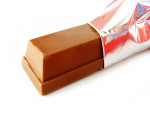 The recent judgement of the European Court of Justice (“CJEU”) in Nestlé v Cadbury offers Nestle a glimmer of hope in their quest to register the shape of their ever-popular KitKat chocolate bar as a trade mark, which has vehemently (and so far successfully) been opposed by Cadbury, in the context of over a decade of trade mark disputes between the rival confectioners.
The recent judgement of the European Court of Justice (“CJEU”) in Nestlé v Cadbury offers Nestle a glimmer of hope in their quest to register the shape of their ever-popular KitKat chocolate bar as a trade mark, which has vehemently (and so far successfully) been opposed by Cadbury, in the context of over a decade of trade mark disputes between the rival confectioners.
Having resided over the trade mark dispute in the English High Court, The Honorable Justice Arnold (“Arnold J”) has since referred several questions to the CJEU for an interpretation on the law regarding a refusal of a trade mark registration.
The questions, and CJEU’s answers, were as follows:
| 1. | What is required to prove that a trade mark has acquired distinctiveness through usage? |
| The CJEU stated that for the shape of the KitKat bar to be registerable as a trade mark, the shape on its own must be sufficient to enable the average consumer to perceive the product as originating from an undertaking of KitKat (ie. Nestle), without the aid of other identifying features, such as branding, the wrapper, etc. | |
| 2. | Where a shape consists of three essential features, one of which results from the nature of the goods themselves and two of which are necessary to obtain a technical result, is registration of that shape as a trade mark precluded? |
| The CJEU responded that it is only necessary for one of the grounds of refusal of registration to be applicable to the shape at issue, in order for the application to be refused (casting doubt on whether this judgement holds the key to KitKat’s trade mark registration). | |
| 3. | Is it possible to register a shape that is necessary to obtain a technical result with regard to the manner in which the goods are manufactured as opposed to the manner in which they function? |
| The CJEU held that although an application to register a sign which consists exclusively of a shape which is necessary to obtain a technical function should be refused, this should not be interpreted as referring to the manner in which goods are manufactured. Consumers should only be concerned about a product’s function, not the method of manufacture. |
The case will now return to the English High Court, where Arnold J will be tasked with applying the CJEU’s interpretation of the law on the refusal of a trade mark registration and to assess whether the shape of the famous KitKat chocolate bar is capable of being registered as a trade mark.
Many commentators draw a positive message from the CJEU’s ruling regarding the factors that must be considered when determining if a mark has acquired sufficient distinctiveness to warrant registration. The CJEU appears to have steered away from the more draconian test of whether customers actually rely on the shape mark to determine the origin of the KitKat bar, in favour of the more achievable test that customers perceive the shape as originating from KitKat.
It remains to be seen how Arnold J applies the CJEU’s interpretation, but his judgement may have important implications in determining the nature and strength of the evidence required in order to successfully register these types of marks.

